Expedition Log: BIOT – Day 4
While you may never see pigs fly, it is possible to see fishes fly—well, glide for very long distances anyway. As we travel to and from the survey sites in our dive boat, it is fairly common to see flying fish break the surface and sail along above the water.
There are over 60 species of flying fishes in the family Exocoetidae. The Latin name for the family translates as “sleeping outside” and relates to the ancient fanciful belief that flying fishes would leap out of the water to sleep on shore at night. Though these fishes do in fact sleep in the water with the rest of their fishy kin, their natural history is still quite remarkable.
Flying fishes have been around since the Miocene (66 million years ago) and evolution has adapted these species well for this novel means of escaping the many hungry mouths of their predators like dolphin, tuna and marlin. The neural arches in the backbone are broader in flying fishes and this makes for a rigid body that is more aerodynamic during flight. When spooked by a potential predator (or a passing ship) the fish begins rapidly beating its tail and swimming at high speed underwater before angling upward. After breaking the water’s surface, the fish then begins to taxi while the elongated lower lobe of the tail fin is still beneath the surface. Using a side-to-side sculling motion, the fish may reach speeds of 60 kilometers (37 miles) per hour. Once airborne the greatly enlarged pectoral fins act as wings to allow the little fishes to glide effortlessly through the air. Some species also have enlarged pelvic fins and these are known as four-winged flying fishes.
Flights may last for over a hundred meters in ideal conditions at a height of several feet above the surface. As the flying fish slows and nears the surface it may re-enter the water or it may use the lower lobe of its tail to accelerate and become airborne again without fully returning to the water. Capable of extending its flight with consecutive glides, they have been recorded spanning distances of up to a quarter of a mile. Sometimes flying fishes can get caught by the wind and their flights can take them much higher than normal. It is not uncommon to find flying fishes that have landed on the decks of ships.
At the start of our mission in the Chagos Archipelago we had to make a long (44 hour) transit from Male in the Maldives. Thankfully, this was an easy crossing in calm seas which at times were glassy smooth. During a particularly flat section of ocean I grabbed my camera and stood out on deck enjoying the hypnotic interplay of light and reflections on the smooth surface. I have always wanted to get some photos of flying fish doing their thing but I usually see them in rougher water where their flights are brief and nearly impossible to photograph. The calm conditions seemed conducive for catching some nice extended taxis and flights and I was soon proved right. As we traveled along, the ship spurred individual flying fish (and sometimes small squadrons) to take evasive flights which I tried to capture in photographic form using a high shutter speed to freeze an instant in time. Below are the results of my efforts to capture the essence of these fantastic flying fish.
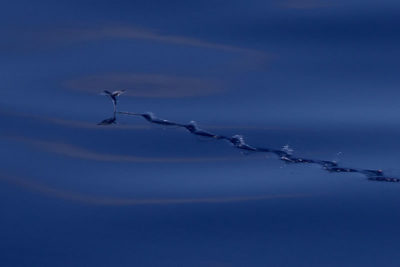
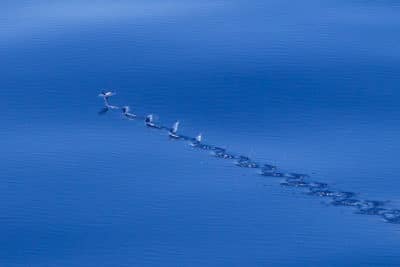
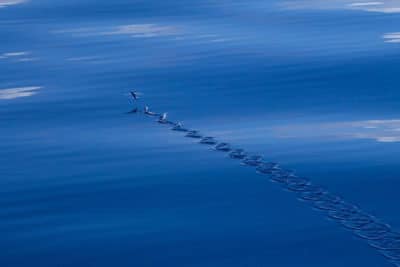
Using a side-to-side sculling motion with the lower lobe of their tail fin, flying fishes taxi along the surface before taking flight.
(click-thru on images for greater detail)

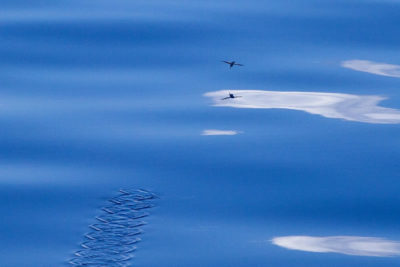
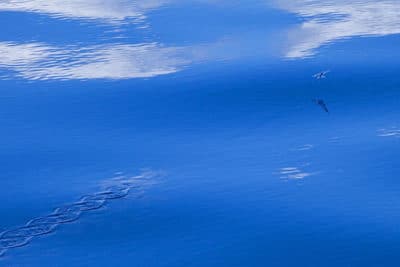
Once airborne, their pectoral fins act as wings to carry them great distances in a controlled glide.
(click-thru on images for greater detail)
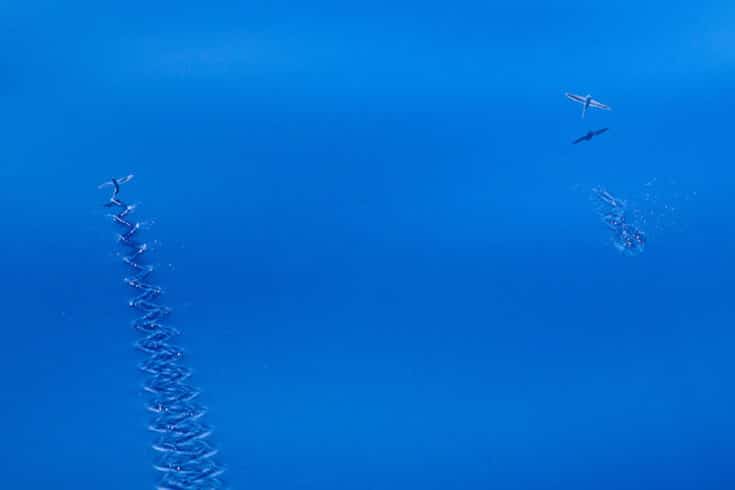
The novelty and grace of flying fishes make them a great photo subject during long transits on calm seas.
(click-thru on image for greater detail)
Photos by Ken Marks.